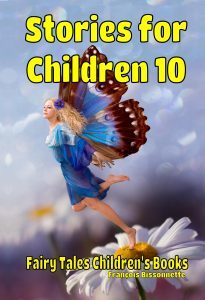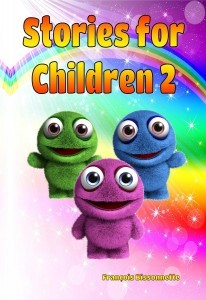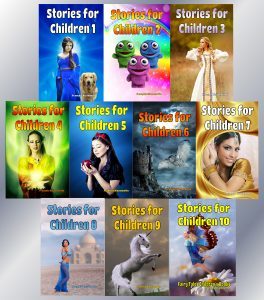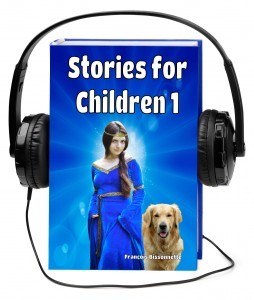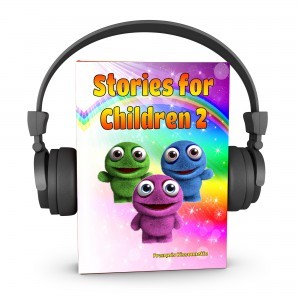Francois Bissonnette's Blog, page 3
August 1, 2017
Top Tips For Reading to your Children
Top Tips For Reading to Children
 AbeBooks.com
AbeBooks.com1. Begin reading to them from at least six months old. Use those thick board books so they can get used to handling books — some people read to ’em while they’re still in the womb.
2. Do it regularly — reading must become routine. It’s have a bath, brush their teeth, listen to a good book.
3. Turn off the TV. Turn off the computer games. Turn off the Ipod. Turn off the radio. If I’m reading, then they’re listening and there will be no distractions.
4. Put some effort into your reading — you don’t have to do funny voices but a monotonous drone can put a young listener to sleep.
5. Stop and explain new words being heard for the first time — and encourage your child to ask when they hear something they don’t understand.
6. With chapter books, have a quick discussion at the end of a chapter — you can start by saying something like…well, it looks like Harry and Ron are really in trouble this time?
7. Let your child choose the books — this is important in developing their own tastes and a feeling of independence. Young children may ask for the same picture book over and over again — that’s fine, they move on….eventually.
8. Don’t under-estimate your child’s ability to process stories that seems threatening and violent. There’s nothing worse than bland bedtime reading.
9. Once my children were learning to read to themselves, our routine changed to include them reading something to me before I read them.
10. For a bit of variety, introduce ‘guest’ readers — granny or grand-dad can do it when they come to stay, or an older sister can do it for an evening.
Children’s Books: Stories for Children 7
http://www.amazon.com/dp/B00UY4LIX0
Subscribe to our email newsletter.
You’ll hear from us only when we have FREE eBooks promotion, special price discount and new releases.
First name
Email *
July 29, 2017
FREE MANDALA Coloring Books for Adults and Children
Subscribe to our email newsletter.
You’ll hear from us only when we have FREE eBooks promotion, special price discount and new releases.
First name
Email *
March 15, 2017
How to Help A Child Who Is Struggling With Reading
Parenting Tips – How to Help A Child Who Is Struggling With Reading
from Kids In The House
If you have an elementary school child who’s struggling with reading like mine was. The best thing is, just have them sit on your lap and pick up a book that’s the right level for them and have them start with the sounds. Don’t ask them to sounded out all the time. That’s, that is something that is very what we grew up with hearing sounded out sounded out, but it doesn’t make sense to them, because they’re seeing letters almost like their pictures.
They could sometimes, they could look at the word but in one sentence and then not recognize it the next sentence later. So it’s very important that you take it one step at a time with them. You help them with these sounds. Ask them to look for picture clues in the, in the picture that’s there. If they can’t figure out what the word is, if they can’t figure out what the sound is just ask them; do you see anything in the picture that helps you?
Try yourself to stay calm because it’s very easy for us as parents to get frustrated when we see that they’re frustrated. So just help them with the sound. Start to make the sound for them. If they see the word cat say ca and then let them fill out the rest and it makes them feel so confident or vice versa. You can, you have them start the word and then you finish it for them and you do it together and before you know it, they’re gonna be reading at grade level, within months.
March 14, 2017
Parenting Tips – How To Teach A Child To Read
Parenting Tips – How To Teach A Child To Read
Parents always ask other some tips for teaching my child how to read. There are a couple of things that are really, really important. Reading is both understanding the words as well as being able to pull the words of the page. To understand words probably the most important thing that parents can do is read to their children and talk about what they’re reading.
Even the simplest of children’s books have wonderful rich language in them and that’s how children’s vocabulary grows is when their parents read to them from a very early age through adolescence.
Learning how to read individual words can really be enhanced by playing games with sounds. So rhyming is a wonderful thing to do. A children’s games like a pig latin are wonderful ways of teaching children how to play with sounds in words. So those are some things that parents know how to do and enjoy doing and as many times as you can have fun around the active reading with your child the more they’re going to love reading and the more they’re going to enjoy it and move towards it.
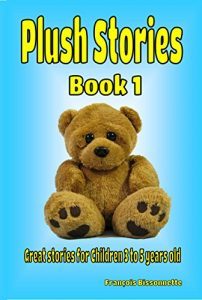

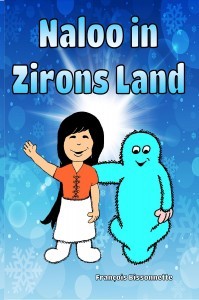
Tips for Reading to Your Child
Tips for Reading to Your Child
from The Parent Teacher Bridge
1. Expose them to fiction (make-believe stories) and non-fiction (factual books).
The trend in schools is for elementary teachers to have ½ of their classroom libraries filled with nonfiction books. As adults, we might enjoy a good novel here and there, but many written materials we need are nonfiction: news articles, instruction manuals—even recipes. Children love nonfiction books with topics such as animals, weather and space.
2. Track your print when you read with them.
This is simply pointing to the exact words as you read them. It is a behavior that is essential to developing a good reader. Children learn from this: which page to read first, which direction to go when reading (left to right) , and get regular sight word practice as they point to each word. For example, the more times they read the book and point to the word “the” or “who,” the more likely they are to remember—even if they see it in a different book. You might have seen the bouncing ball on a sing-along dvd, where the ball bounces on each word at the exact time. It’s the same concept. It keeps the child on track. Even tracking print with a “magic reading stick” (anything you can make look cool) can make the reading more fun if Little Susie is a stubborn about using her finger. With my 4 year old, I made a stick out of twisted aluminum foil.
3. The last tip for reading aloud with your child is to talk with him or her after you reach each page.
You might make a comment such as, “Wow! I don’t think I would answer the door for that Big Bad Wolf.” Or it could be a question you ask. Such as, “What do you think Goldilocks will do when those bears come home?” Modeling this thinking is modeling true reading. Remember, reading is more than just saying the right words on a page. Reading involves understanding and remembering what you have read. Your child will pick up on what you are doing and will begin imitating your behavior.
Reading with your child is such a special time with more benefits than I could possibly describe in this one video. Treasure it and know it is a gift you’re giving your child. Even on your busiest day, try to fit in reading a small book, a few pages of a book, or even a poem. Some reading is better than no reading at all.
Children’s Books: STORIES FOR CHILDREN THE COMPLETE SERIES
Children’s Books: STORIES FOR CHILDREN THE COMPLETE SERIES
★★★★★ My daughter said “I like the book, dad” and she’s NOT a reader. So, for her, that’s practically like inviting the author over for tea and a sleepover! Well done! 
December 22, 2015
10 Ways To Make Reading Fun
By Dawn Holland
1. Popcorn Reading
This is a fun way for a child to be able to read the words he/she knows and pass on the words that are causing frustration. While reading a book together, each of you take a turn reading aloud. When the one who is reading says the word “popcorn”, it is the other persons turn to read.
2. Reading Buddy
Pair your reader up with an older “reading buddy” and have them read a book out loud together. We all have had times where an explanation of something made more sense coming from one of our peers or a sibling. This gives you child the opportunity to practice reading without an adults watchful eye causing possible nervousness.
3. Highlight Heaven
Grab an older book and a highlighter and have your child highlight every word one the page that he/she can read. After all the words your child knows are highlighted on the page, take a moment and have your child look and see how many words he/she can actually read. This is quite a confidence booster.
4. Flashlight Reading
Before your child is too tired at the end of the day, take some time and read in dark room. Take a flashlight with you and read the book by flashlight. Little boys especially like this one.
5. Secret Hideout
What child hasn’t built a fort at one time or another? If you don’t already have a fort in your house or outside in the yard, help your child create one. It can a blanket fort, a plywood fort outside, a tree house, or even a simple under to bed fort. (Just make sure you both can fit…being able to get out once you’ve gotten in is helpful too!) Bring your child’s favorite reading book, get comfortable and read away.
6. Reading Corner
Make a “reading corner” somewhere in your home. Let your child be a part of decorating it and picking just the right spot to place it. Add some bean bags or pillows, maybe a favorite poster on the wall or even some family pictures.
7. Take a break and just read to your child sometimes
No explanation needed here.
8. Picture Detective
Have your child flip through a book and look at all the pictures and tell you what he/she thinks is going to happen in the story. Read the story and see how close he/she was.
9. Pop-up word
Pick one word that your child particularly has a hard time with and every time your child reads that word, both of you stand up. This will help him/her remember the word because an action is associated with it. This works particularly well with kinesthetic learners. (A child who wants to move all the time and likes to touch and feel everything.)
10. Star of the Story
Have you ever seen a personalized story book where your child’s name is printed in the story? This is a unique way to get your reluctant reader excited about a book. In these kinds of books, your child’s name and the name of his/her friends are printed in the story-line, making your child the star of his/her very own book! How motivating is that? He/she will have to read the book to find out what kind of adventure he/she will be going on!
To learn more about personalized story books, click the link below.
Sometimes all it takes to make reading fun is some imagination and a change of scenery.
November 18, 2015
New VideoBooks
http://magicalchildrenbooks.com/wp-content/uploads/2015/11/Promo-The-Blue-Princess.mp4
Children’s Books: Stories for Children 1
Children’s Books: Stories for Children 2
Children’s Books: Stories for Children 3
Children’s Books: Stories for Children 4
Children’s Books: Stories for Children 4
Children’s Books: Stories for Children 5
Children’s Books: Stories for Children 5
Children’s Books: Stories for Children 10
Naloo Tells her Stories
http://magicalchildrenbooks.com/wp-content/uploads/2015/11/Naloo-1-promo.mp4
Naloo in Zirons Land
Titan the Talking Cloud
Children’s Books read aloud: It’s Fun to Be
It’s Fun to Be a Cat and a Dog
It’s Fun to Be a Cat and a Dog
Animal Stories for Children
Animal Stories Book 1
Animal Stories Book 1
Animal Stories Book 1
Animal Stories Book 3
Animal Stories Book 3
September 11, 2015
NEW Audiobooks
Now, when you purchase the Kindle version of either Stories for Children 1 or Stories for Children 2, you can get the audiobook version for free.
All you’ll have to do is follow the link included at the end of the book and enter your email address to claim your free download.
For anyone interested in hearing how these audiobooks sound like, here are two samplers:
The Blue Princess
(Available right now)
http://magicalchildrenbooks.com/wp-content/uploads/2015/09/Blue-Princess-sampler.wav
A Colorful Argument
(Coming Soon)
http://magicalchildrenbooks.com/wp-content/uploads/2015/09/A-Colorful-Argument-sampler.wav
August 7, 2015
Reading aloud to your child
Reading aloud may be the single most important activity parents do with their child.
That’s because a child who is read to is more likely to enjoy reading and will want to learn to read. Once a child becomes passionate about reading-he or she will have the opportunity to enjoy a lifetime of learning.
According to Dr. Andrea Pastorok, education psychologist for Kumon Math and Reading Centers, reading aloud stimulates the brain and serves as the foundation for literacy development.
Studies show that the more a person reads, the better he or she becomes at it and students who read the most are more likely to stay in school and experience academic achievement.
Dr. Pastorok recommends these tips to make reading aloud fun and interesting for your children:
1. Begin reading aloud to your child as soon as possible. Reading to infants helps them develop a sense for the rhythm and pattern of language.
2. Remember, the art of listening is acquired. It must be taught and cultivated gradually. Read slowly enough for your child to build mental pictures of what he or she has just heard.
3. Reading aloud helps children develop their imaginations and creativity. Looking at illustrations also encourages an appreciation of art.
4. If chapters are too long for one reading session, find a suspenseful stopping point.
5. Use plenty of expression when reading. If possible, change the tone of your voice to fit the dialogue and adjust the pace of your voice to fit the story.
6. Avoid long descriptive passages until the child’s imagination, vocabulary and attention span are capable of handling them.
7. Unusually active children may find it difficult to sit and listen. Paper, crayons and pencils allow them to keep their hands busy while listening.
8. Encourage conversation about what is being read. Foster a child’s curiosity with patient answers to their questions.
9. Remember to set aside regular reading times each day for your child to read on his or her own.
Dr. Pastorok is an educational specialist with Kumon Math and Reading Centers. She has a doctorate in educational psychology, a master’s degree in counseling psychology and more than 30 years’ experience working with children.
Push the play button to play the video “The importance of reading aloud”
http://magicalchildrenbooks.com/wp-content/uploads/2015/08/The-importance-of-reading-aloud-Tips-for-reading-to-children.mp4




